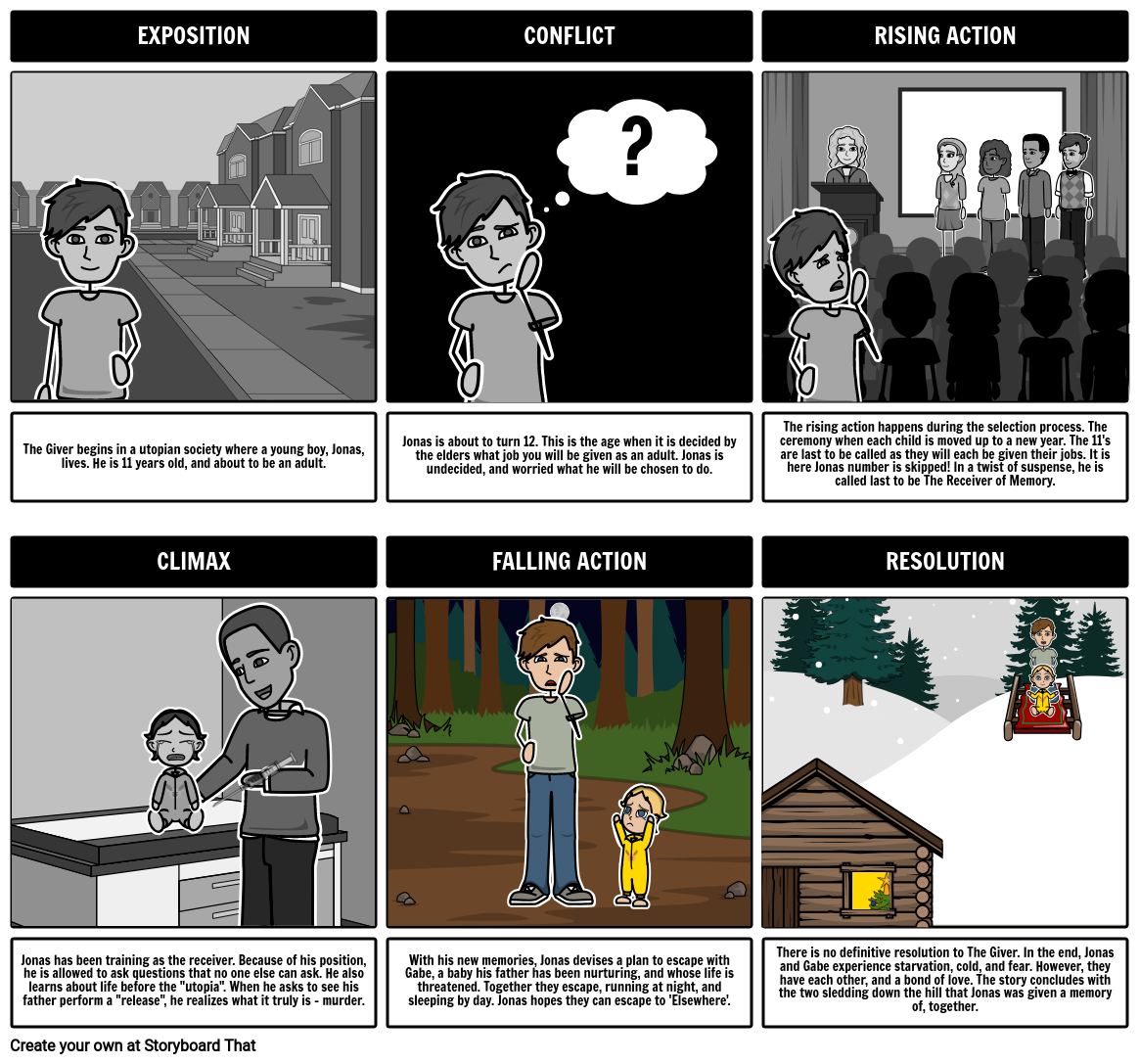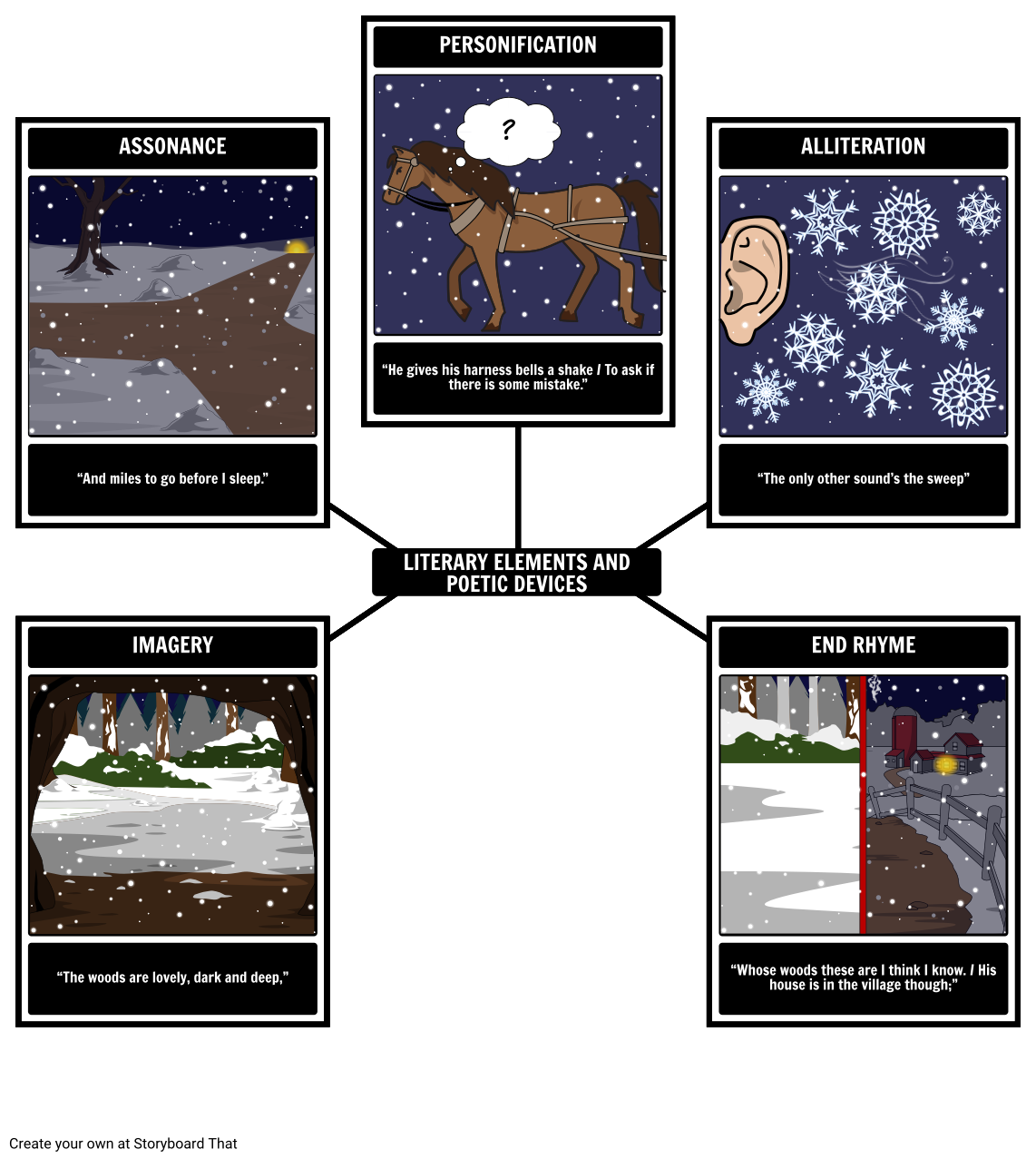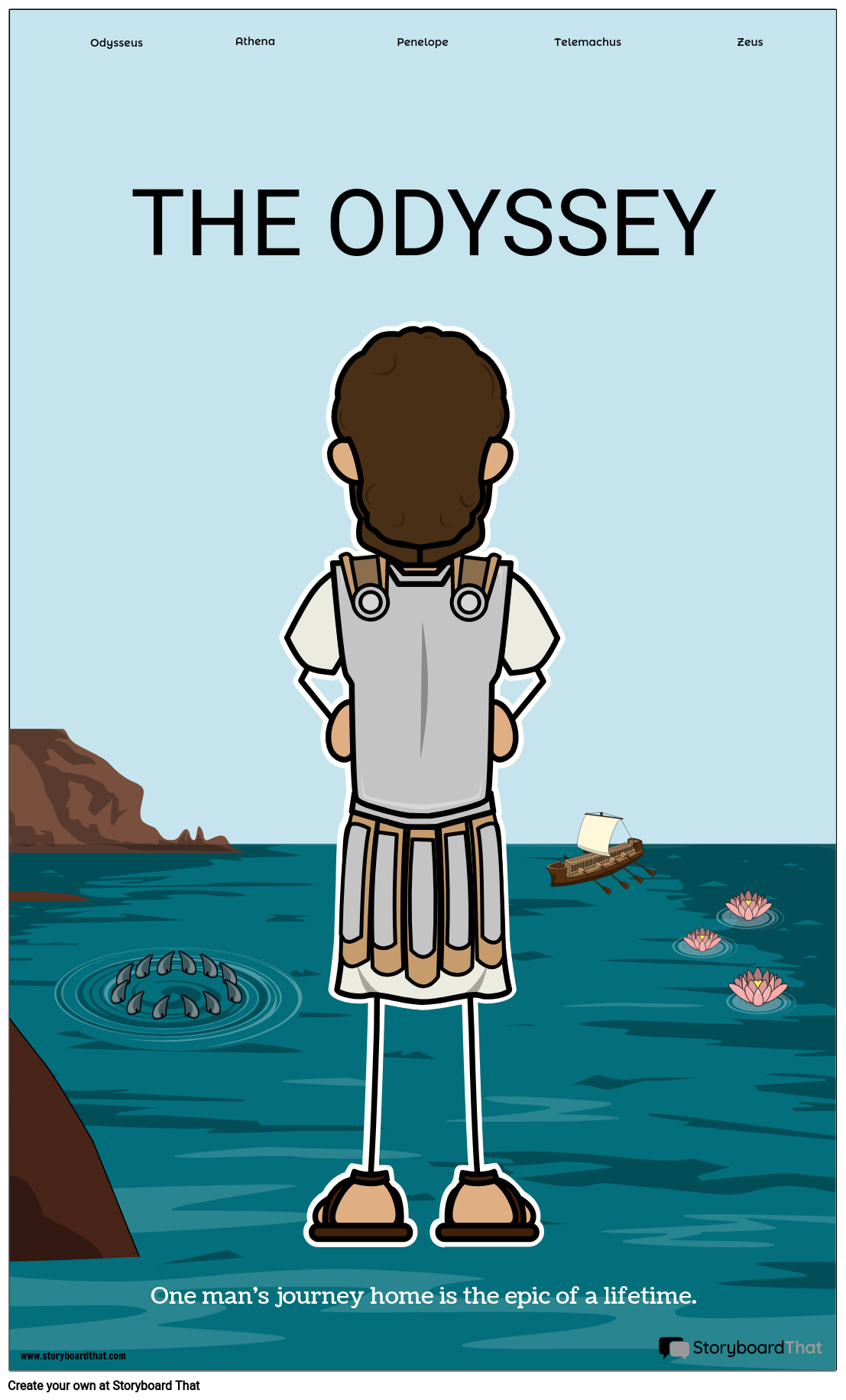What is a Book Report?
That term is used pretty loosely. Some people mean a detailed synopsis. Others want an in-depth analysis on one or more literary devices. Some people actually mean a critic's review of the book. There are even those who want EVERYTHING. Storyboard That wants to bring all of the different kinds of book reports together in a much more engaging medium. Make that dreaded book report something fun with different types of projects! Incorporate student choice and let your students pick the way they want to create a report on a book!
Writing a Synopsis
The basis for understanding any piece of literature is to know what is going on. Being able to retell or summarize a story is especially important for students in the younger grades to make sure they can comprehend what they are reading. However, there are very complex plots and subplots in many pieces of high school literature as well, and a synopsis can be highly useful for discussing and understanding the structure of the story.
There are many ways to sum up the plot of a story, depending on length, complexity, and type of story. For a more detailed look, check out the following articles:
- Chapter Summaries
- Parts of a Story
- Plot Diagram
- Five Act Structure
- Parodies, Satire, and Modern Adaptation
- Book Creator
Writing a Literary Analysis
When reading literature, we want students to pick up on various literary devices and elements in addition to understanding the plot of the story. Literary devices enrich plot, character development, description, the reader's connection to the story, and so much more.
Here are a few of the literary devices and literary elements that we love:
- Figurative Language
- Allusion
- Foreshadowing
- Literary Conflict
- Physiognomy
- Themes, Symbols, and Motifs
- Flashback
- Types of Irony
- Allegory
Writing a Critic's Review
Everybody has an opinion. The Common Core wants students to be able to critically analyze the writing of others for style, technique, arguments, and so much more. Spitting back facts or the events in a story does not necessarily mean a student actually understands deeper meanings or can parse out authors' strategies and goals.
Whether you want your students to be wary of rhetorical strategies, the quality of writing, personal opinion on the story, or validity of argument or historical accuracy, we have you covered:
- Teaching Rhetoric with Ethos, Pathos, Logos
- OSCAR - Direct and Indirect Characterization
- Propaganda
- Archetypes
- Types of Heroes
Book Posters
Posters, especially movie posters, are a great way for students to showcase symbols and themes in a story. There are so many ways to put together a poster for a book, but students will be able to pick the most important elements of a story and represent them visually.
Printable Projects
For even more levels of creativity and customization, students can take advantage of the larger paper and poster-sized layouts to create incredible book reports.
- Book Jackets: Combine a summary, reviews, and a visual interpretation on a book jacket!
- Dioramas: Create dioramas to illustrate key scenes from a story or a story as a whole!
- Postcards and Letters: What would one character write to another? How would the protagonist explain the story to someone who wasn't there? Through a letter, of course!
- Newspapers: How would the events of an important scene look if it was reported in a newspaper?
- Scrapbooks: Combine visuals and writing by creating scrapbook pages to analyze characters and historical figures, among other things.
- Social Media Pages: The ultimate way to analyze a character. What would their social media pages look like?
Related Activities
How to Create Engaging Book Reports with Different Types of Projects
Introduce the concept of book reports
Explain the different types of book reports that exist, such as detailed synopses, literary analysis, critic's reviews, and more. Emphasize the importance of understanding the story and exploring literary devices.
Encourage student choice
Allow students to select the type of project they want to create for their book report. Provide a variety of options to cater to different interests and learning styles.
Writing a Synopsis
Teach students the importance of summarizing a story to understand its key elements. Provide guidance on how to write a synopsis, considering factors like length, complexity, and type of story. Share resources like chapter summaries, plot diagrams, and articles on understanding story structure.
Writing a literary analysis
Help students develop their analytical skills by focusing on literary devices and elements in addition to understanding the plot. Introduce various literary devices, such as figurative language, allusion, foreshadowing, and flashbacks. Teach students how these devices enhance the plot, character development, and reader engagement.
Exploring themes, symbols, and motifs
Encourage students to delve deeper into the thematic aspects of a book. Guide them in identifying and analyzing recurring themes, symbols, and motifs that contribute to the overall meaning and message of the story.
Presenting the book report
Provide students with an opportunity to present their book reports in the medium they chose. Create a supportive and interactive environment where students can share their projects with their classmates. Encourage discussions and reflections on different interpretations and insights gained from each project.
Frequently Asked Questions about Book Reports
What are the essential elements of a book report worksheet?
A book report worksheet should include the title and author of the book, a brief summary of the plot, an analysis of the main characters, a discussion of the book's themes, and an evaluation of the book's strengths and weaknesses. It should also include space for the student to write their opinions and reactions to the book.
Can book reports be done in groups?
Group book reports can be a fun and engaging way to encourage teamwork and collaboration. However, it is important to ensure that each member of the group contributes equally to the project. It may be helpful to assign specific tasks or roles to each group member to ensure that everyone is involved.
Are book report worksheets appropriate for all grade levels?
Book report worksheets can be adapted to suit the needs and abilities of students at any grade level. Younger students may require simpler worksheets that focus on basic story elements, while older students may need more complex worksheets that challenge them to think critically and analyze the book on a deeper level.
How long should a book report worksheet be?
The length of a book report worksheet will vary depending on the age and grade level of the student. Generally, a book report worksheet should be long enough to adequately cover the required elements of the assignment, but not so long that it becomes tedious or overwhelming for the student.
© 2024 - Clever Prototypes, LLC - All rights reserved.
StoryboardThat is a trademark of Clever Prototypes, LLC, and Registered in U.S. Patent and Trademark Office









